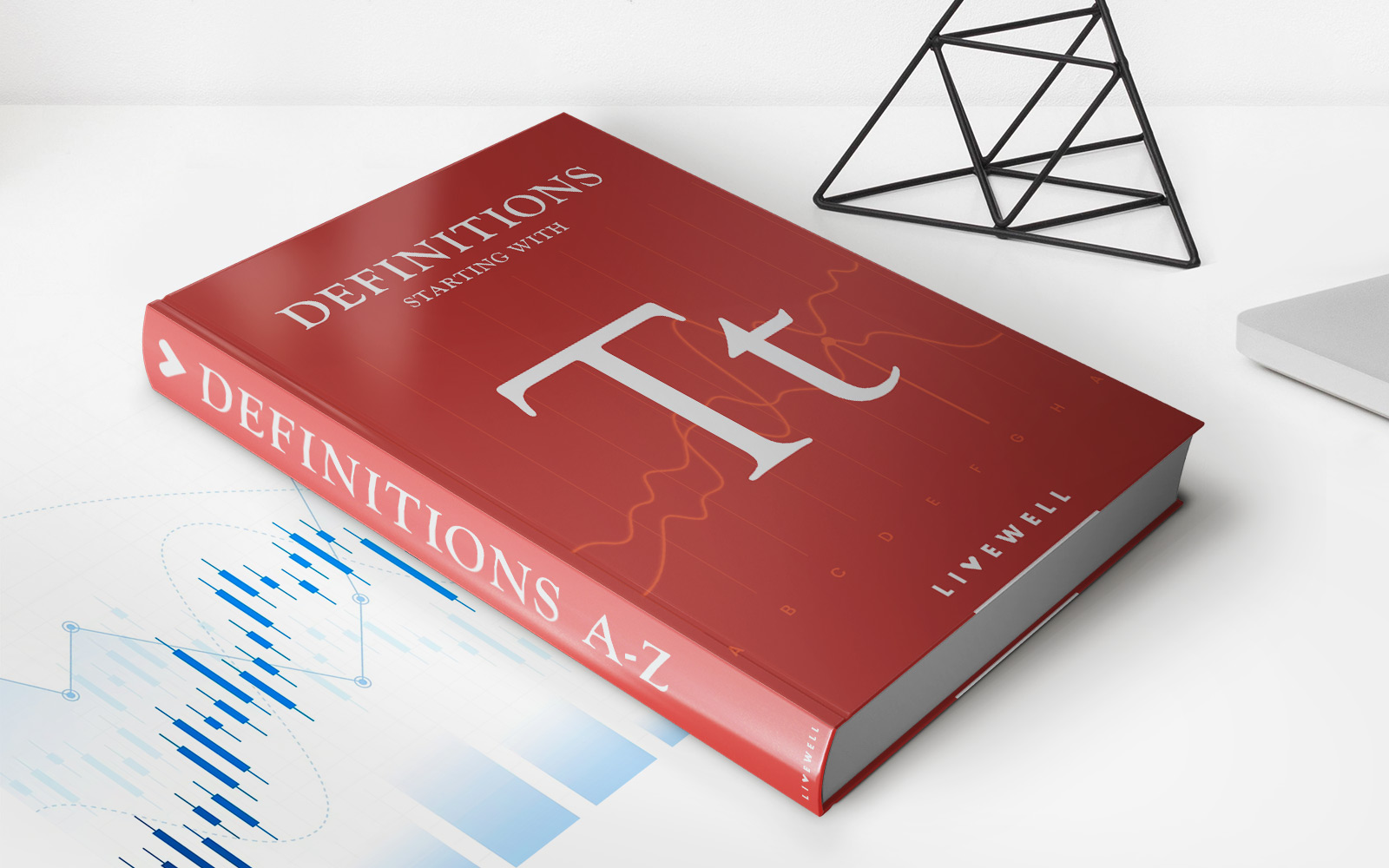Home>Finance>How Long Does It Take To Pay Off 30K In Student Loans


Finance
How Long Does It Take To Pay Off 30K In Student Loans
Published: January 20, 2024
Looking to pay off $30K in student loans? Find out how long it takes on average and get valuable finance tips to expedite your loan repayment.
(Many of the links in this article redirect to a specific reviewed product. Your purchase of these products through affiliate links helps to generate commission for LiveWell, at no extra cost. Learn more)
Table of Contents
- Introduction
- Understanding Student Loans
- Determining Payment Plans
- Strategies for Paying Off Student Loans Faster
- Budgeting and Cutting Expenses
- Increasing Income and Seeking Additional Financial Assistance
- Consolidation and Refinancing Options
- The Impact of Interest Rates
- Other Considerations for Paying Off Student Loans
- Conclusion
Introduction
Student loans have become an integral part of the higher education landscape, providing countless students the opportunity to pursue their dreams and earn a degree. While the decision to invest in education is undoubtedly a wise one, the burden of student loan debt can often linger long after graduation. For many individuals, the question arises: How long does it take to pay off $30,000 in student loans?
Student loan repayment can vary greatly depending on various factors, such as the interest rate, monthly payment amount, and overall financial situation of the borrower. It’s important to understand the different repayment options available and consider strategies to expedite the repayment process.
In this article, we will explore the intricacies of student loans and provide insights into determining payment plans, strategies for paying off loans faster, and other considerations that can help borrowers tackle their debt more effectively. By gaining a deeper understanding of the repayment process, individuals can empower themselves to make informed decisions and take control of their financial future.
Understanding Student Loans
Before diving into strategies for paying off student loans, it’s essential to have a firm grasp on the basics of these financial obligations. Student loans are borrowed funds that are specifically designed to help students cover the costs of education, including tuition, books, housing, and other related expenses. They come in two major forms: federal and private loans.
Federal student loans, offered by the U.S. Department of Education, are the most common type of loans taken out by students. These loans generally have lower interest rates and more flexible repayment options compared to private loans. They also offer various repayment plans, including income-driven repayment options that adjust monthly payments based on the borrower’s income and family size.
Private student loans, on the other hand, are provided by banks, credit unions, or other financial institutions. They often have higher interest rates and less flexible repayment terms than federal loans. Private loans require a credit check and may require a cosigner if the borrower has limited credit history or a low credit score.
When it comes to paying off student loans, it’s important to understand the concept of interest. Interest is the cost of borrowing money and is calculated as a percentage of the loan balance. The interest accrues over time and adds to the total amount owed. Therefore, the longer it takes to repay the loan, the more interest will accumulate.
Another key aspect to consider is the loan term, which refers to the period over which the loan is to be repaid. The standard repayment term for federal loans is typically ten years, while private loans may have varying terms depending on the lender. Shorter loan terms often result in higher monthly payments but can save borrowers a significant amount of money in interest over the life of the loan.
Understanding the structure of student loans and the factors that determine repayment options is crucial in devising a successful repayment strategy. By familiarizing themselves with the nuances of their loan agreements, borrowers can make informed decisions regarding their payment plans and repayment timelines.
Determining Payment Plans
When it comes to repaying student loans, there are various payment plans to choose from. The right payment plan for you will depend on your financial situation and long-term goals. Here are some common options to consider:
- Standard Repayment Plan: This is the most straightforward option, with fixed monthly payments over a ten-year term for federal loans. Private loans may have different terms. Monthly payments are determined based on the loan amount and interest rate. While this plan may result in higher monthly payments, it allows borrowers to pay off their loan faster and pay less interest over time.
- Income-Driven Repayment Plans: These plans are available for federal loans and are designed to adjust monthly payments based on the borrower’s income and family size. Examples include the Income-Based Repayment (IBR), Pay As You Earn (PAYE), and Revised Pay As You Earn (REPAYE) plans. These plans can be helpful for borrowers with low income or those facing financial hardship, as payments are typically capped at a percentage of their discretionary income.
- Graduated Repayment Plan: This plan is also available for federal loans and starts with lower payments that gradually increase every two years. It is often beneficial for borrowers who anticipate their income to increase over time. While the initial payments may be lower, the overall interest paid over the life of the loan may be higher compared to the standard plan.
- Extended Repayment Plan: This plan extends the repayment term beyond the standard ten years, allowing borrowers more time to pay off their loans. This can result in lower monthly payments, but it may also result in more interest paid over the life of the loan. This plan is an option for federal loans with high balances.
It’s important to thoroughly research and compare the pros and cons of different payment plans before making a decision. Consider your current financial situation, income prospects, and future goals. Remember that you can switch payment plans at any time if your circumstances change.
Additionally, it’s crucial to stay on top of your loan servicer communications and comply with all payment obligations. Missing payments or defaulting on your loans can have severe consequences, including damage to your credit score and potential legal action.
Now that we’ve covered the basics of payment plans, let’s delve into strategies that can help you pay off your student loans more quickly.
Strategies for Paying Off Student Loans Faster
Paying off student loans can be a challenging task, but there are strategies that can help you accelerate the repayment process. Here are some effective strategies to consider:
- Make extra payments: One of the most straightforward ways to pay off your loans faster is by making extra payments whenever possible. This can be done by allocating any additional income, such as bonuses or tax refunds, towards your loan payments. Even small additional payments can make a significant impact in the long run, reducing the principal balance and saving you interest over time.
- Pay biweekly: Instead of making monthly payments, consider switching to a biweekly payment schedule. By making half of your monthly payment every two weeks, you’ll end up making an extra payment each year. This strategy can help you shave off months or even years from your repayment timeline.
- Explore refinancing options: If you have a good credit score and stable income, refinancing your student loans may be a viable option. Consolidating your loans at a lower interest rate can help you save money on interest and potentially reduce your monthly payments. However, keep in mind that refinancing federal loans with a private lender means losing certain federal loan benefits such as income-driven repayment plans and loan forgiveness options.
- Apply windfalls to your loans: When you come into unexpected money, such as an inheritance, bonus, or lottery winnings, consider applying a portion or all of it towards your student loans. While it may be tempting to use the money for other purposes, putting it towards your debt can significantly reduce your loan balance and accelerate your payoff timeline.
- Take advantage of employer benefits: Some employers offer student loan repayment assistance as part of their benefits package. Check with your employer to see if they offer any programs or incentives to help employees pay off their student loans faster. Taking advantage of these benefits can provide you with additional financial support and reduce your overall debt burden.
- Consider a side hustle: Increasing your income through a side gig or part-time job can provide you with extra funds to put towards your loans. Look for opportunities to leverage your skills and interests, whether it’s freelancing, tutoring, or starting a small business. The additional income can make a significant difference in paying off your loans more quickly.
Implementing these strategies requires discipline and careful financial planning. Create a budget that allows you to allocate a significant portion of your income towards loan repayment, while still covering your essential expenses. It may require sacrifices and adjustments to your lifestyle, but the long-term benefits of becoming debt-free are well worth it.
Remember, every little bit counts. By adopting these strategies and remaining committed to your repayment goals, you can make significant progress towards paying off your student loans faster than you ever thought possible.
Budgeting and Cutting Expenses
When it comes to paying off student loans, one of the most effective strategies is to create a budget and identify areas where you can cut expenses. By allocating your resources wisely, you can free up extra money to put towards your loan payments. Here are some tips to help you budget and reduce expenses:
- Analyze your spending: Take a close look at your monthly expenses and categorize them into essential and non-essential categories. Essential expenses include things like rent, utilities, groceries, and transportation, while non-essential expenses may include dining out, entertainment, or subscription services. Identify areas where you can make cuts or find more affordable alternatives.
- Set a realistic budget: Create a comprehensive budget that outlines your income and all of your expenses. Set realistic limits for each category and hold yourself accountable. Consider using budgeting apps or spreadsheets to track your expenses and monitor your progress.
- Reduce discretionary spending: Look for ways to cut back on non-essential expenses. Instead of going out to eat, try cooking at home and packing your lunch. Cancel unused gym memberships or subscription services that you no longer need. Cutting back on discretionary spending can free up extra cash to put towards your loan payments.
- Minimize housing costs: Housing is often one of the most significant expenses. Consider finding a roommate to split the rent or explore more affordable housing options in your area. If you own a home, refinancing your mortgage to secure a lower interest rate or downsizing to a smaller property can help reduce your monthly housing costs.
- Save on transportation: Transportation costs can add up quickly. Consider using public transportation, carpooling, or biking instead of driving. If you have a car, explore the possibility of refinancing your auto loan to secure a lower interest rate or downsizing to a more fuel-efficient vehicle to save on gas expenses.
- Shop smartly: When it comes to groceries and other household items, look for sales, use coupons, and consider buying in bulk to save money. Compare prices before making purchases, and consider purchasing generic brands instead of name brands. Small savings on everyday items can add up over time.
- Negotiate bills and subscriptions: Contact your service providers and negotiate lower rates for internet, cable, or insurance. Cancel any subscriptions or services that you no longer use or need. Shop around for competitive rates to ensure you’re getting the best deal possible.
By implementing these budgeting strategies and cutting expenses, you can free up more money to put towards paying off your student loans. Remember, every dollar saved is a dollar that can be used to reduce your debt and achieve your financial goals.
Increasing Income and Seeking Additional Financial Assistance
When faced with the challenge of paying off student loans, increasing your income and seeking additional financial assistance can provide valuable support. Here are some strategies to help you boost your income and explore potential sources of financial assistance:
- Explore career advancement opportunities: Look for opportunities for career growth and advancement within your current job or industry. Consider acquiring additional certifications or skills that can make you more marketable and increase your earning potential.
- Take on a part-time job or side gig: Consider taking on a part-time job or starting a side gig to supplement your income. This can be anything from freelancing, tutoring, or offering your services online. Explore your talents and interests to find opportunities that align with your skills and schedule.
- Utilize your hobbies and talents: If you have a unique talent or hobby, consider monetizing it. Whether it’s painting, crafting, or playing a musical instrument, there may be opportunities to sell your creations or offer lessons. Explore online platforms and local markets where you can showcase and sell your work.
- Apply for loan forgiveness programs: Depending on your field of work, you may be eligible for loan forgiveness programs. The Public Service Loan Forgiveness (PSLF) program, for example, forgives the remaining balance of federal loans for borrowers who work full-time in a qualifying public service job for ten years. Research and explore programs that may be available in your field.
- Seek employer assistance: Some employers offer student loan repayment assistance as part of their benefits package. Check with your employer to see if they offer any programs or incentives to help employees pay off their student loans. Taking advantage of these benefits can provide you with additional financial support and expedite your loan repayment.
- Invest in continuing education: Consider investing in your education to increase your earning potential. Acquiring advanced degrees or specialized certifications can open doors to higher-paying job opportunities. While there may be upfront costs associated with furthering your education, the long-term financial benefits can outweigh the initial investment.
- Apply for grants and scholarships: Research and apply for grants and scholarships that are applicable to your situation. There are various scholarships and grants available based on factors such as academic achievements, field of study, demographics, and financial need. These financial aids can help reduce your overall student loan burden.
- Seek assistance from family and friends: If possible, consider discussing your financial situation with your family or close friends. They may be willing to provide support or offer interest-free loans to help you pay off your student loans faster. Be sure to establish clear terms and repayment plans to avoid any strain on your relationships.
By increasing your income and seeking additional financial assistance, you can accelerate the repayment process and alleviate the burden of your student loans. Remember, every extra dollar you earn and every form of financial support you receive can make a significant difference in your journey towards becoming debt-free.
Consolidation and Refinancing Options
Consolidation and refinancing are two options that can help simplify your student loan repayment and potentially save you money. Here’s a closer look at each option:
Consolidation: Consolidating your student loans involves combining multiple loans into a single loan. This can make repayment more convenient as you’ll only have one monthly payment to manage. Federal loan consolidation is available through the U.S. Department of Education, while private loan consolidation is offered by various financial institutions.
When you consolidate federal loans, a Direct Consolidation Loan is used to pay off your existing loans. This new loan will have a fixed interest rate based on the weighted average of your current loans. Consolidating federal loans can also open up access to various repayment plans and forgiveness programs. However, it’s important to note that consolidation does not lower your interest rate or save you money on interest payments.
Refinancing, on the other hand, involves replacing your existing loans with a new loan from a private lender. The goal of refinancing is to secure a lower interest rate, potentially saving you money in interest over the life of the loan. To qualify for refinancing, you typically need a good credit score and a stable income. Refinancing allows you to customize your loan terms, such as selecting a shorter repayment term or switching from a variable interest rate to a fixed rate.
While refinancing offers the potential for savings, it’s important to carefully consider the potential trade-offs. When you refinance federal loans with a private lender, you may lose certain federal benefits such as income-driven repayment plans, loan forgiveness programs, and deferment or forbearance options. Therefore, it’s crucial to weigh the long-term savings against the potential loss of these federal loan benefits.
When deciding whether consolidation or refinancing is right for you, consider your specific circumstances, including your loan types, interest rates, and desired repayment terms. Research and compare different lenders to find the best options available to you. It may be helpful to consult a financial advisor to ensure you make an informed decision that aligns with your financial goals and priorities.
Keep in mind that consolidation and refinancing are not the right solutions for everyone. If you have a manageable loan balance and are eligible for borrower benefits or forgiveness programs, it may be more beneficial to continue with your current repayment plan. Evaluate your options carefully and consider seeking professional advice to determine the best course of action for your individual situation.
The Impact of Interest Rates
Interest rates play a crucial role in the repayment of student loans and can have a significant impact on your overall financial obligations. Understanding how interest rates work and their implications can help you make informed decisions about your loan repayment strategy. Here are some key points to consider:
1. Fixed vs. Variable Interest Rates: Student loans can have either fixed or variable interest rates. A fixed interest rate remains the same throughout the life of the loan, providing predictable monthly payments. In contrast, a variable interest rate can fluctuate over time, causing your monthly payments to change. It’s important to carefully consider your tolerance for potential interest rate fluctuations when deciding between loan options.
2. Impact on Total Loan Cost: The interest rate directly affects the total cost of your loan. Higher interest rates result in higher overall loan payments, while lower rates can save you money over the life of the loan. It’s essential to compare interest rates when considering loan options to determine the most cost-effective solution.
3. Impact on Monthly Payments: The interest rate also influences your monthly payments. Higher interest rates lead to higher monthly payments, as a larger portion of your payment goes toward interest rather than the principal balance. On the other hand, lower interest rates can result in more manageable monthly payments, allowing you to allocate more funds towards paying down the principal balance more quickly.
4. Impact on Loan Repayment Timeline: A higher interest rate can significantly extend the time it takes to pay off your loan. The interest that accrues over time increases the overall loan balance, making it more difficult to reduce the principal. Conversely, lower interest rates can help you pay off your loans faster by minimizing the additional cost of interest.
5. Refinancing Opportunities: If your student loan has a high interest rate, you may consider refinancing to obtain a lower rate. Refinancing allows you to replace your existing loan with a new loan that has more favorable terms. Lowering your interest rate through refinancing can save you money on interest payments and potentially reduce your monthly payments, depending on the repayment term you choose.
6. Impact on Different Loan Types: Federal and private loans can have different interest rates. Federal student loans typically have fixed interest rates, which are set by the government. Private loans, on the other hand, often offer both fixed and variable interest rates. It’s essential to compare interest rates and terms between federal and private loans to determine the most advantageous option for your unique circumstances.
When managing your student loans, it’s crucial to monitor interest rates and explore opportunities to improve your repayment terms. By staying informed about the interest rates associated with your loans and considering options such as refinancing, you can take steps to minimize the impact of interest and make smarter financial decisions to pay off your student loans more efficiently.
Other Considerations for Paying Off Student Loans
While determining payment plans and implementing strategies to pay off student loans faster are crucial, there are additional factors to consider as you navigate the repayment process. Here are some other important considerations:
1. Prioritize high-interest loans: If you have multiple student loans with different interest rates, it’s wise to prioritize paying off the higher-interest loans first. By focusing on these loans, you can minimize the accumulation of interest over time and save money in the long run.
2. Understand your rights as a borrower: Familiarize yourself with your rights and protections as a student loan borrower. Know the terms and conditions of your loan agreements, including repayment options, deferment, and forbearance. Stay informed about changes in legislation or policies that may affect your loan repayment.
3. Consider the opportunity cost: When deciding on repayment strategies, consider the opportunity cost of allocating funds towards your student loans. Evaluate other potential uses for that money, such as investing, saving for retirement, or pursuing other financial goals. Finding a balance between debt repayment and achieving other financial milestones is crucial.
4. Explore loan forgiveness programs: Investigate loan forgiveness programs available to you, especially if you work in a public service or eligible profession. Some programs provide forgiveness after a certain number of years of qualifying payments. Research and determine if you meet the requirements for any of these programs, as they can significantly reduce your loan burden.
5. Communicate with your loan servicer: Stay in regular communication with your loan servicer to ensure you have accurate information regarding your loan payments. Update your contact information promptly, notify them of any changes in financial circumstances, and address any concerns or questions you may have regarding your repayment process.
6. Manage your credit wisely: Consistently making your loan payments on time can positively impact your credit score, helping you establish a solid credit history. On the other hand, missing payments or defaulting on your loans can severely damage your credit. Maintain responsible credit habits to establish a strong financial foundation.
7. Seek professional advice if needed: If you find yourself overwhelmed or unsure about the best course of action, consider seeking advice from a financial advisor or student loan counselor. They can provide personalized guidance based on your unique circumstances and help you make informed decisions about your repayment strategy.
Remember that loan repayment is a process that requires patience and persistence. Celebrate your progress along the way and seek support from friends, family, or online communities going through a similar situation. By staying informed and proactive, you can successfully navigate the journey of paying off your student loans and pave the way for a debt-free future.
Conclusion
Paying off student loans can seem like an overwhelming task, but with the right knowledge and strategies, you can take control of your financial future. By understanding the intricacies of student loans, determining the most suitable payment plans, and implementing effective strategies, you can make tangible progress towards becoming debt-free.
It’s important to create a budget, cut expenses where possible, and increase your income to allocate more funds towards your loan payments. Utilizing consolidation and refinancing options can simplify your repayment process and potentially save you money on interest. Evaluating the impact of interest rates, prioritizing high-interest loans, and exploring loan forgiveness programs are vital considerations that can ease your financial burden.
Throughout the repayment journey, remember to stay informed, communicate with your loan servicer, and take advantage of available resources. Seek guidance from professionals if needed and stay proactive in managing your student loans. Embrace the opportunity to build healthy financial habits and make sound financial decisions as you work towards paying off your student loans.
By staying committed to your repayment goals, focusing on long-term financial well-being, and maintaining a positive mindset, you can overcome the challenges of student loan debt. With each payment, you are one step closer to financial freedom and the ability to pursue your dreams without the burden of student loans. Stay persistent and motivated, and eventually, you will celebrate the moment when your student loans become a thing of the past.














